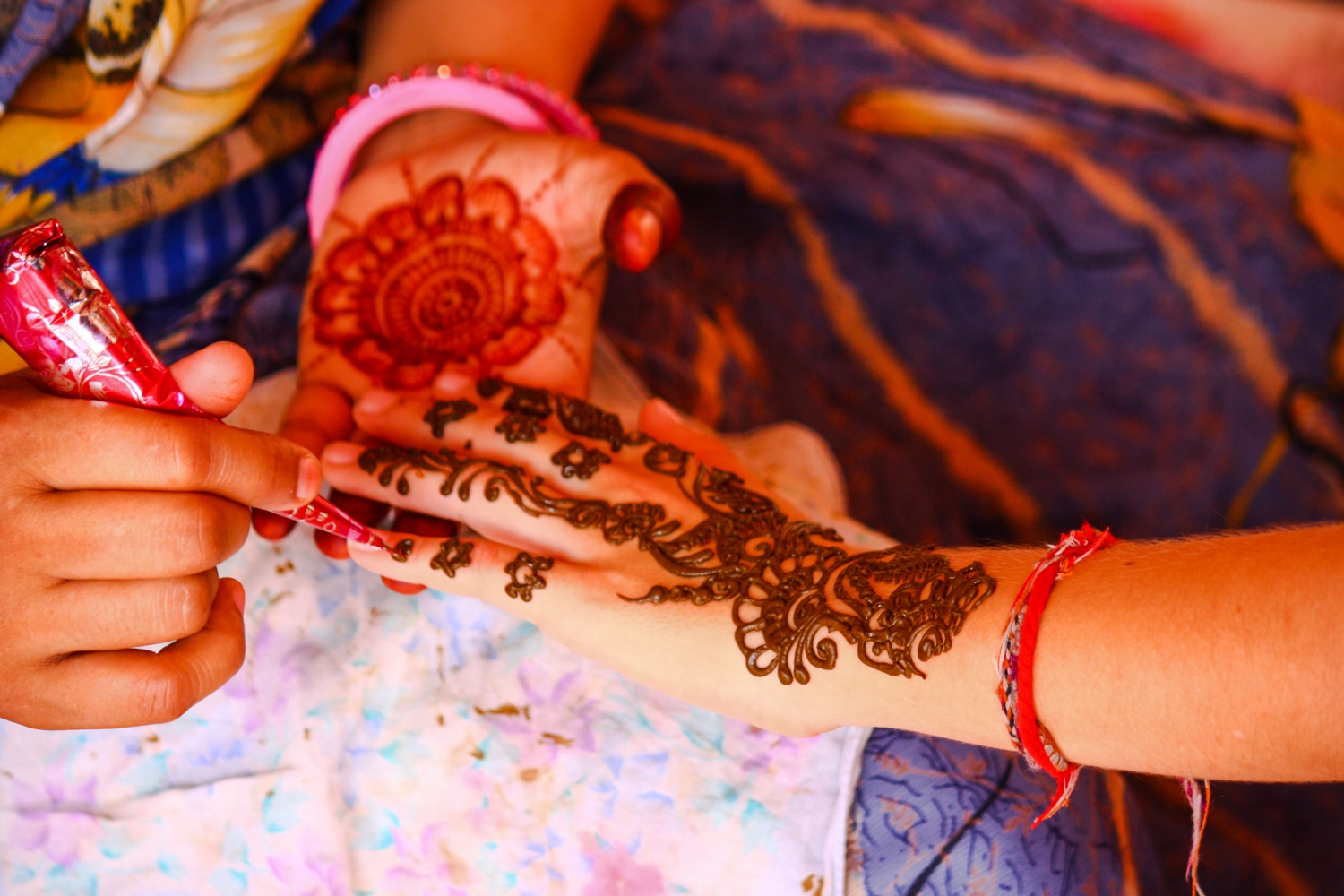
Do you know about henna? Well, if you don’t, I can tell you what I know about it.
‘Henna’ stands for the flowering plant, the dye from the plant and the short lasting tattoos on the body. The fresh henna leaves can not stain the the skin. To make the dye you have to dry the leaves of the henna plant, grind them to a fine powder and mix them ether with lemon juice or black tea. The last touch is to put the paste in a paper cone so it is easy to use.
The art of henna is very old. Since the 1200 BC Egyptians used henna to color their hair and nails. In India, Africa and the Middle East henna art is believed to bring love, good fortune and to keep the evil away. All this I learned from the internet.
In India brides get henna tattoos on their hands up to the elbow and their feet. Here it is believed that if the tattoo stays long on the skin the bride will be happy with the husband’s family. If the tattoo fades fast she will not be happy in her marriage. Before the wedding a mehndi celebration is made for the bride and the groom. (Mehndi means ‘the art of henna body tattoo’). Women from the nai cast, which is the cast for henna painters, spend hours tattooing the bride with very beautiful designs. The groom gets a henna tattoo as well, but not as pretty as the bride.
I have noticed that not only do women use henna as body art. People in India use henna to make patterns on cloth and Muslim men use henna to dye their hair and beards because they are trying to do what Mohammed did: not to pull a gray hair out but to dye it. In India many older Muslim men have bright red and orange hair!
I have enjoyed the art of henna. I also tried doing it on my mom’s hand. It was hard and it turned out that we bought the wrong type of henna. We think it was for cloth and it dried up blood red! My mom was not so happy;)
I hope you enjoyed my post!
Raina
